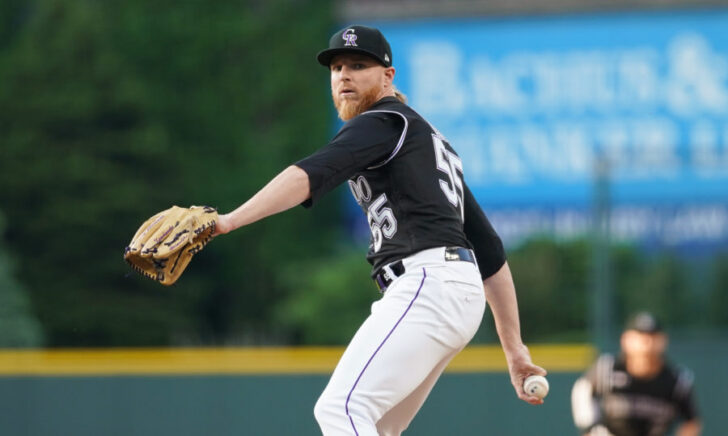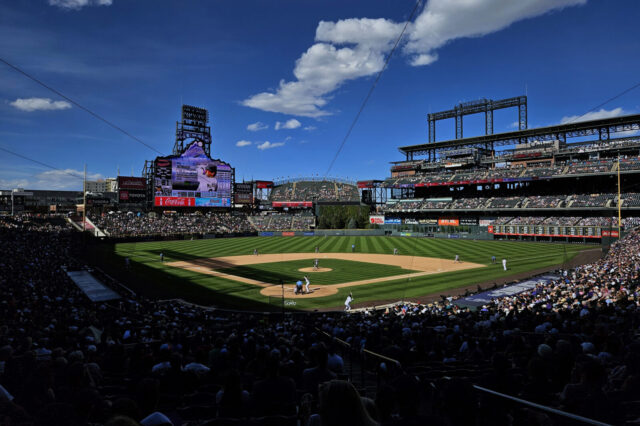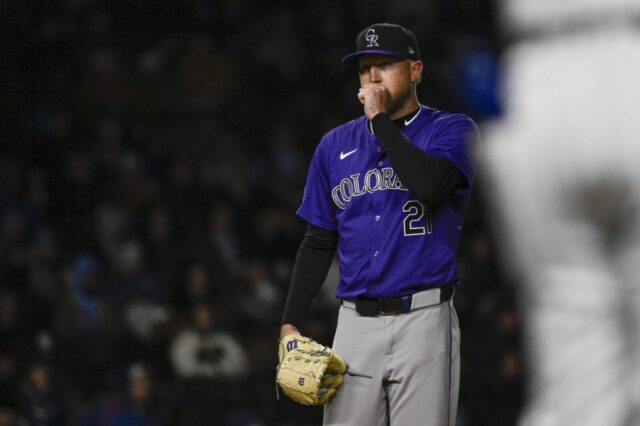Pitchers are constantly on the verge of disappearing after dawning a Colorado Rockies uniform. Though many have tried to break through, very few have succeeded in the hitter’s haven that is Coors Field.
After a 2018 season that included a demotion, it was hard to envision that Jon Gray would be the one to shift the narrative.
With greater success at home than on the road, Gray is defying the odds this year and turning doubters into believers. The only thing left to do is sustain it – something his backstop believes is only natural.
“He has God-given talent and that’s what he brings to the game every day,” Tony Wolters said.
On the year, Gray has compiled a 3.46 earned run average at home as part of his season-long mark of 3.84. The performance comes only a year after Kyle Freeland posted a 2.40 ERA at Coors Field en route to a fourth-place National League Cy Young finish.
In terms of sustainability, Freeland is the cautionary tale.
Last season, the southpaw had the second-best, single-season ERA in club history (2.85). Without the velocity of Gray, Freeland was able to strand 82.8 percent of his baserunners – a career-high.
Similarly, Gray has been able to strand a career-high 75.9 percent of hitters that have reached base against him this year.
The biggest difference between the two is the nature of their breakouts.
Many have shunned Gray in the past after his inconsistent ways. Last season alone, the hard-throwing hurler had four starts in which he allowed six-or-more earned runs. He also had nine outings with one-or-fewer earned runs allowed.
The dichotomy of results that Gray achieved, in likely the worst year of his young career, not only left pundits puzzled but also skeptical.
Results in 2018 have shifted the narrative so far that Gray’s career has become undervalued. Two of the last three years – including this year – he’s been able to tally a sub-4.00 ERA.
In Rockies’ history, only three other pitchers – Tyler Chatwood, Jhoulys Chacin and Ubaldo Jimenez – have been able to do the same.
Mysteriously, Gray has done it all without the key ingredient that is said to drive success at altitude: groundballs.
With a high-90s fastball and hard breaking balls, Gray has lived with strikeouts as a catalyst, rather than forcing his fielders to work. A career 47.1-percent groundball rate is a change from what is rumored to be the key to pristine results at Coors Field.
One of the Rockies’ previous starters that appeared to master the plan at home was Aaron Cook. As one of the best sinker pitchers in the franchise’s history, he carried a 57.5-percent mark.
His career rate notwithstanding, Gray was able to put together an outing that relied on adjustments Friday. One of them was to let the visitors pound the ball into the dirt.
“I thought he threw a lot of low bullets all night long,” Bud Black said. “He kept the ball on the ground to a team that leads all of baseball in hitting the ball into the ground.”
In all, he induced 12 groundouts on the evening – tied for his third-highest total of the year. Against other free-swinging clubs, Gray has also been able to enact a new gameplan on the fly as part of his maturation process as a starter.
“I’ve done a lot better (at in-game adjustments) than I have, really in my career,” Gray said. “It’s something I want to take a lot of pride in and just get better and better at it.”
The eight shutout innings fired by Gray tied his season-high set against the Dodgers less than a month ago. Both starts add to a 150-inning total that has Gray set to eclipse his previous single-season record of 172.1.
In park-adjusted ERA, Gray is also on pace to break his previous career-high set in 2017 (138) with his 2019 mark of 139 so far.
While the Rockies have fallen out of contention, Gray has continued to excel.
The efforts have him on a career path that could make him the best pitcher in franchise history if he signs another deal.



